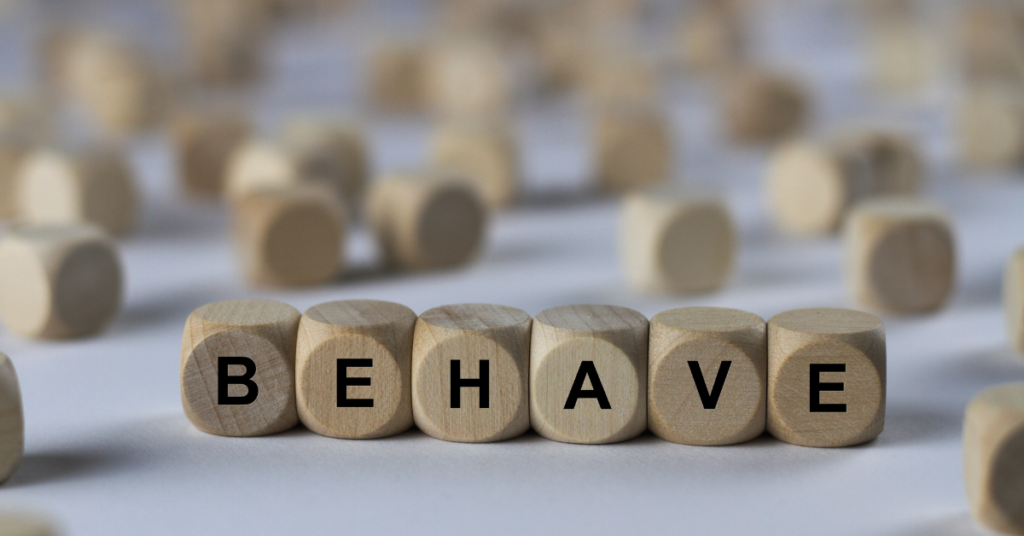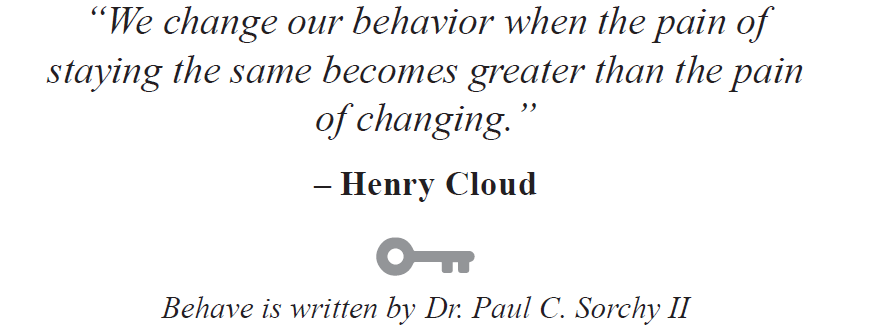Behave



Mike Myers’s character, Austin Powers, is famous for saying the one line, “Oh…behave”… in that drawn-out British accent. He was saying, “Do not be naughty.”
I overheard a mother declare to her three children in my office the other day, “Now, you kids need to behave in here today, or I won’t get you smoothies later.” At that moment, I wondered exactly what she really meant by that. There must have been a preset standard she was expecting them to not only know, but follow.
If you have ever been in trouble, you would want to learn how to behave.
Especially if it was a recurring issue and had costly consequences. So how do we, as adults, learn to behave? The progression of the word itself is unique. “Behave” is made of two words: “be” and “have.” So apparently, when you behave correctly, you can be something and have something. The first word is “be,” so in order to have, you must first be. In other words, it’s more than just a simple behavior. I believe it is a being that produces having, which then impacts behavior.
Perhaps we think the easier way to our goal is just the action itself. Therapists call this “behavior modification,” a term that refers to behavior- al-change procedures that were employed during the 1970s and early 1980s. Based on methodological behaviorism, overt behavior was modified with presumed consequences, including artificial positive and negative reinforcement contingencies to increase desirable behavior. Or it involves administering positive and negative punishment and/or extinction to reduce problematic behavior.
The problem is, if all we do is change what we do (just to get what we want), did we really change? Are we really being or just pretending? Behavior can be changed or modified with the slightest of effort, thus allowing even the smallest circumstances to alter our desired results. But, if our intent embodies the change and truly we live congruent to the expected behavior, then we are being.
If you think of the word and focus on the be part first, like mentioned, the have part will follow. After all, we are human beings, not simply human doings.
The question is, then, how do we…be? I guess we first need to figure out what we want to have. Like Steven Covey declares in his famous work, The 7 Habits of Highly Successful People, “begin with the end in mind.”
I believe that to be is actually to become. It is not an accident. It is an intentional, well-planned outcome. A desired path of accomplishment, be- ginning with your ultimate goal in mind.
So the questions for each of us are, what do we want? What do we want to be? What do we want to become? Thus, how do we want to behave?
To help answer these questions for yourself, follow these four B’s, or Be’s, of behavior:
- Be humble. Learn from others. If you think you’ve got it all figured out, you’re probably headed for a serious crash. Acknowledge that you are in need of change, and do not defend the wrong actions or conduct.
- Be surrounded by what you want. It has been proven that our environment influences us. Our conduct is somewhat formed by what is positively or negatively reinforced by those around us.
- Be intentional. When you are deliberately acting a certain way, you can be anything you choose to be. This develops your character, which eventually births your preconceived results. (Remember who you are trying to be!)
- Be considerate. When you are sensitive to those around you, there will be clues if you are off course—you will notice the small signs. If your behavior is inconsiderate or inconsistent with the values you are trying to live by, then you should immediately say, “Please excuse me” or “I’m sorry!” If you mess up, get up, reposition yourself, and try again.
